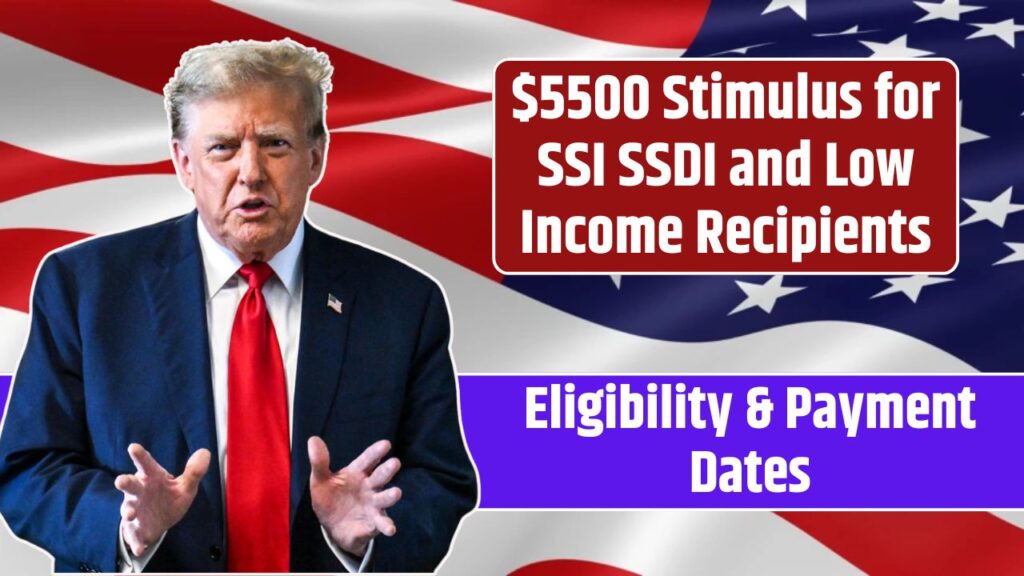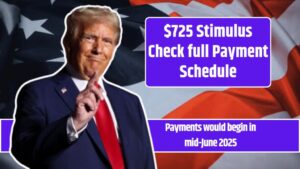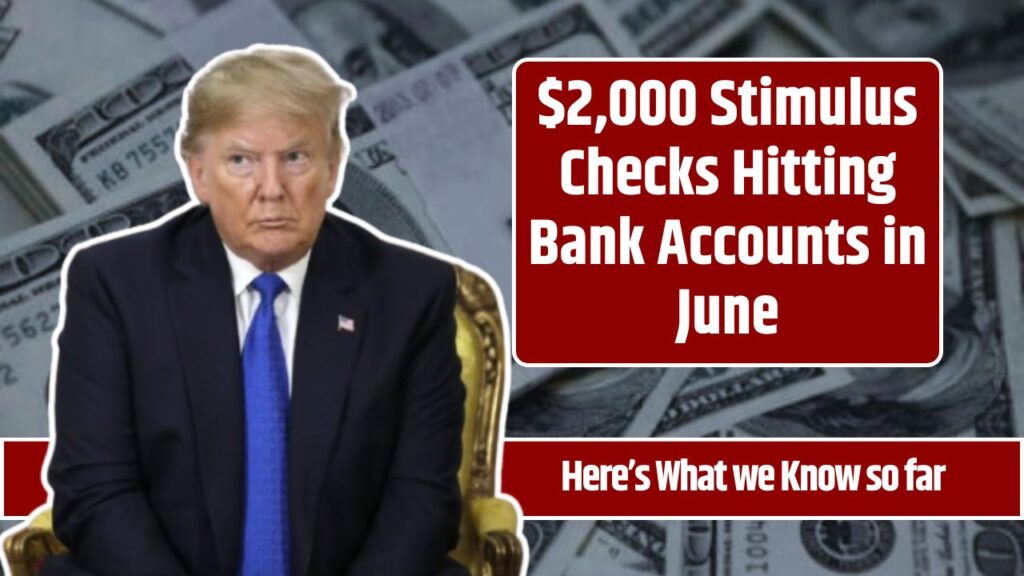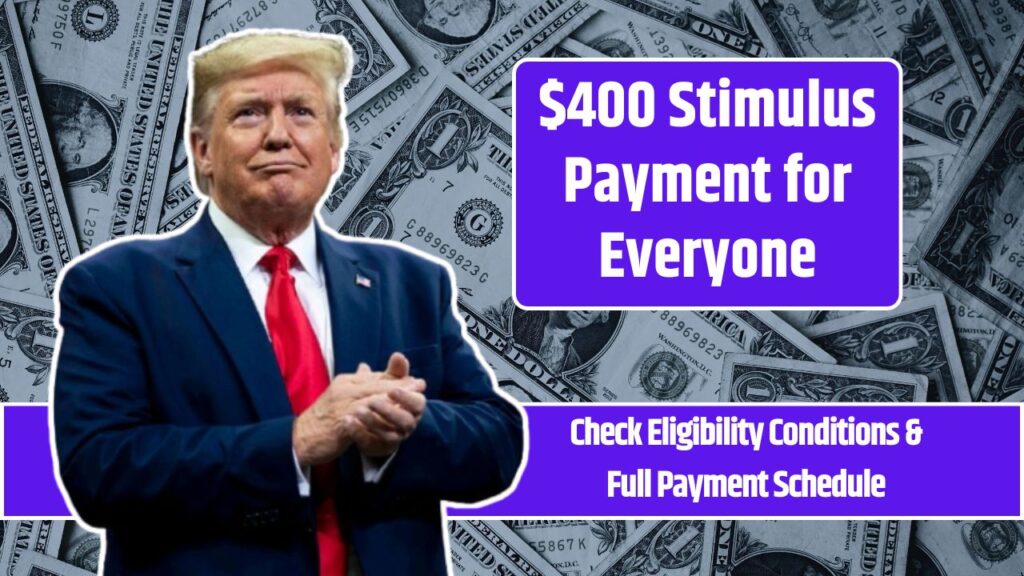With talk of a possible $2,500 stimulus check making the rounds this April 2025, many Americans—especially those on Social Security, low-income households, and taxpayers—are eager for clarity. While the rumor mill is buzzing, it’s important to note that no official statement or legislation has confirmed this payment. Still, understanding the speculation, past relief efforts, and how to prepare in case it becomes a reality is worth your attention.
Let’s break down what’s fueling the rumors, who might qualify if it happens, and how to stay ready.
What’s Behind the $2,500 Stimulus Buzz?
Reports circulating in early April 2025 suggest that economic challenges and persistent inflation could prompt a new round of stimulus checks. The rumored amount? A generous $2,500. The idea has picked up steam due to rising living costs and political discussions around supporting vulnerable populations like seniors and low-income earners.
But here’s the reality: no bill has passed, and no official communication has come from the IRS, U.S. Treasury, or Congress about a fourth stimulus.
Summary of the Current Speculation
| Topic | Details |
|---|---|
| Stimulus Amount | $2,500 (rumored, not confirmed) |
| Potential Eligibility | Income-based, tax status, dependents, benefit status |
| Payment Methods | Direct deposit, checks, prepaid debit cards |
| Timeline | No official date or approval yet |
| Official Source | www.irs.gov |
What’s Actually Confirmed Right Now?
What has been confirmed is separate from the $2,500 rumors. The IRS is currently issuing up to $1,400 for nearly one million Americans who missed out on the 2021 Recovery Rebate Credit. This is not a new stimulus—it’s a catch-up for those who qualified but didn’t claim it.
So while talk of $2,500 is making headlines, the only real payment activity involves tax-year 2020 credits being processed in 2025.
Historical Stimulus Payments: A Quick Recap
To understand how a future payment might unfold, it’s useful to look at past examples. Stimulus checks aren’t new—they’ve been used as tools to soften economic blows.
| Year | Stimulus Amount | Purpose |
|---|---|---|
| 2020 | Up to $1,200 | COVID-19 emergency relief |
| 2021 | Up to $1,400 | Ongoing pandemic support |
| 2008 | Up to $600 | Great Recession stimulus |
| 2001 | Up to $300 | Economic slowdown buffer |
Each required a legislative act from Congress and presidential approval. Any new stimulus in 2025 would follow the same route.
Who Could Qualify for a $2,500 Payment?
If Congress greenlights a new stimulus, eligibility criteria would likely resemble previous rounds:
1. Income Levels
- Single filers: Full amount for income up to $75,000
- Married couples: Full amount for income up to $150,000
- Partial checks for incomes up to $99,000 (single) or $198,000 (joint)
2. Filing Status
You’d likely need to file a 2023 or 2024 tax return. Some non-filers, especially seniors or benefit recipients, could be automatically included via government records.
3. Dependents
Like in past checks, you may get more per dependent. Eligible dependents could include:
- Children under 18
- College students
- Disabled adults
4. Social Security, SSI, SSDI, and VA Recipients
Recipients of federal benefits would probably be included automatically, without needing to file a return, assuming their information is up-to-date.
How Would the $2,500 Be Paid?
Should the stimulus be approved, here’s how payments would most likely be delivered:
- Direct Deposit: Fastest option, especially for those with bank info on file with the IRS or SSA
- Paper Checks: Mailed to recipients without direct deposit info
- Prepaid Debit Cards: Used when no bank info is available, especially in lower-income areas
To avoid delays, make sure your banking and mailing info is current with the IRS or SSA.
When Could the Payment Arrive?
There’s no official timeline yet, but based on history:
- Legislation passes
- IRS begins processing (within 2–3 weeks)
- Direct deposits go out first
- Checks and debit cards follow
- Total delivery time: 1–3 months post-approval
What You Can Do Now
Even though there’s no confirmation, it’s smart to stay proactive:
- File your 2023 tax return if you haven’t already
- Update your bank account info with the IRS
- Keep your mailing address current
- Watch for official IRS or Treasury announcements
- Don’t fall for rumors or scams circulating on social media
How to Track Your Payment (If It Happens)
If a stimulus check is approved, the IRS would likely reactivate the “Get My Payment” tool:
- Visit irs.gov
- Select “Get My Payment”
- Enter your SSN, birthdate, and address
- View payment status, delivery method, and date
This tool was widely used during previous stimulus waves and helped millions track their money in real time.
With no legislation signed into law, the $2,500 stimulus remains just a rumor. But by staying informed, filing your taxes, and ensuring your financial details are current with the IRS, you’ll be ready if it becomes official. Economic relief programs move quickly once approved—being prepared can mean faster access to your payment.
FAQs
Is the $2,500 stimulus confirmed?
No, there’s been no official confirmation from the IRS, Treasury, or Congress.
Who would qualify if it happens?
Eligibility would likely be based on income, tax status, and dependent claims.
Will Social Security recipients receive it?
If approved, they may qualify automatically via existing SSA records.
How will payments be delivered?
Via direct deposit, mailed checks, or prepaid debit cards.
Where can I check payment status?
Use the “Get My Payment” tool at irs.gov when it becomes available.











